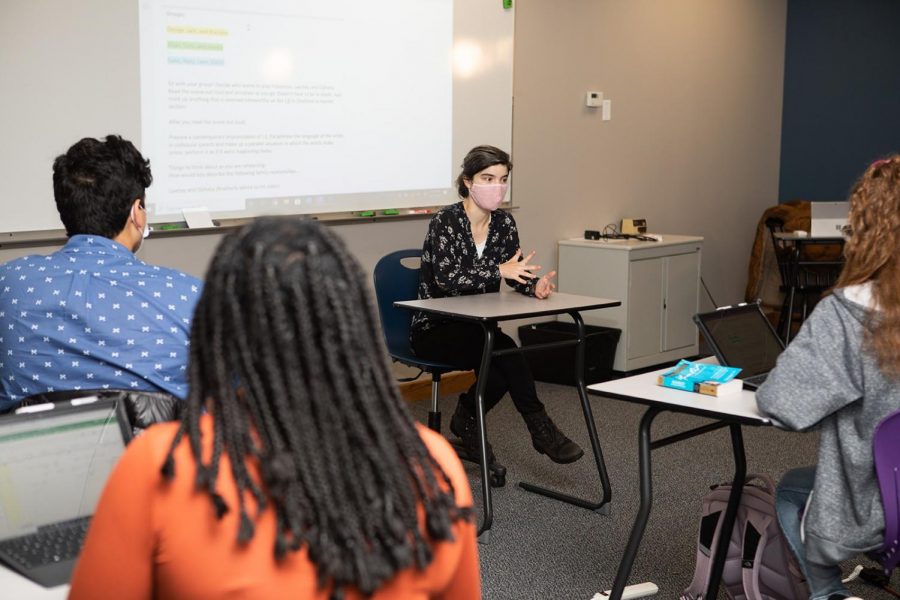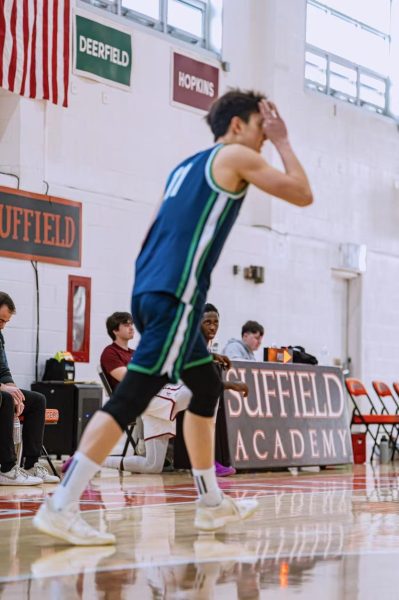Have Masks Affected How We Learn?
Though necessary to stem the spread of Covid-19, masks have undeniably made it harder for students and teachers to connect across the Williston campus.
Students and teachers at Williston have noted that the mask mandate, while essential, has negatively impacted their ability to communicate within the classroom. Both groups have noted that it is harder to hear, read facial expressions, and convey tone and humor, which ultimately makes it much more difficult to create a rapport within the classroom.
The global Covid-19 pandemic has called for the use of mask wearing and, last year, also included organized social distancing procedures within the school.
With the onset of the global pandemic in the Spring of 2019, Williston took to online classes to properly protect all students from the dangers close proximity would bring as the virus spread. Because vaccination has become readily available and 98.7% of students and faculty have received both doses of the vaccine (with many faculty and staff having also received the booster shot), life at Williston has returned to a relative normal.
Many students and faculty have shared that mask wearing in the classroom causes a divide between teachers and students and makes it harder to learn and teach. However, those interviewed all shared the view that the immense safety and health masks provide outweigh all possible negatives of mask wearing in the classroom.
With the start of the 2021-2022 school year, the Williston administration revoked their outdoor mask policy, but continued to require mask-wearing in indoor spaces for the health and safety of the community.
Only five students and two non-student cases were noted among the 3,278 administered Covid-19 tests this fall. On November 15 at 5:02 p.m., Head of School Robert Hill sent out an email entitled: “Williston Update on Mask Policy” detailing the school’s decision to revoke the outdoor masking requirement following the return from break.
Quickly after however, with the rising number of cases and growing threat of the Delta variant and new Omicron variant, on November 29, Hill and the school reinstated the indoor mask mandate in his email entitled “Williston Masking Update.”
Soleil Richardson, a sophomore from Bermuda, believes mask wearing in the classroom has made it more difficult to concentrate and engage, especially within her discussion-heavy English classes.
“Mask wearing in the classroom generally has a negative effect on how present people feel, therefore they tend to space out more,” Soleil said. “Also, especially in English classes, a lot of exercises we could do before masks we can’t do now.”
She continued: “But I mean aside from not being able to see their faces, I don’t really find it harder to connect with [my teachers]. The mask hasn’t changed much of what I do in the classroom.”
Soleil feels as if mask wearing has had a minimal impact on her classroom experience.
“It is way harder to focus, in my opinion, but I would like to think it hasn’t affected me in a huge way,” she said.
Sarah Sawyer, a teacher in the English department feels it has been more difficult to create comaraderie in the classroom and keep the students engaged.
“I have found myself doing a lot of hand motions and dancing and whatever else,” Sawyer said. “I also use a lot more exaggeration with my body than before the masks.”
She shared that while the mask policy has caused students and faculty to adapt in unexpected ways, she believes it has had many positives as well.
“I think it is fundamentally positive because it has made most teachers sort of rethink or rework or look more closely at certain practices we took for granted,” Sawyer said.
Sawyer shared that the lack of social interaction because of the pandemic has changed the level of social connections she observes in her students.
“It comes down to kids missing, at the end of the day, two full years of social skills” she said. “I have to do a lot more scaffolding in what we do in a group and what a good product looks like which I didn’t do as much before.”
Sawyer spoke about how the addition of masks has affected student connection.
“I think it’s harder for kids to connect on an interpersonal level with their peers who are unlike them or who are not in their social group. It seems to be a little more arduous for them,” she said.
Everly Carroll, a senior from San Francisco, California, believes mask wearing has had a drastic impact on the classroom environment.
“[Mask-wearing] has totally changed everything. So much is based on reading facial expressions,” she said.
Everly commented on the division between students who contrast in their opinions regarding the necessity of the mask mandate.
“Masks create a big separation between students who think masks should be worn correctly or incorrectly,” she added.
Karleen Schaffer, a teacher in the math department, says it has been somewhat difficult to teach material due to the addition of masks.
“The biggest hindrance for me is when I can’t tell who is speaking or I can’t hear someone’s explanation or question. It takes away some of the rhythms of class,” she said. “Overall, I think we have learned to adapt and look at other cues now more in the eyes or body.”
Schaffer commented on the negative effect of mask-wearing on humor and communication in the classroom.
“There are times when I feel like it is hard to tell exactly the feeling that someone is trying to portray and other times, it feels so natural like we don’t have masks on,” she added.











